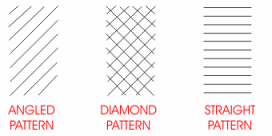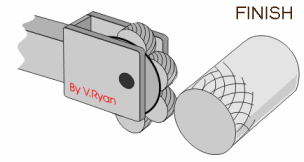
Thanks to V. Ryan © 2003 For Pictures For More Visit
http://www.technologystudent.com/equip1/knurl1.htm
An Introduction to Knurling Tool
Author: John Russel
A knurling device is used in combination with a lathe to stamp the ends of metal tubes and other shafts. The stamped ruts might also act as hand grips for the user or superior grip for rubber and the plastic covers. The knurling tool itself comprises of various rotary cutters that are held against the metal shaft as it turns on the metal lathe at a moderately slow speed (500 rpm on average). Turning is a technique by which cylindrical pieces of metal lathe or wood are spun in place by a variable-speed electric motor. As the piece spins, a variety of cutting tools could be placed against it to take away fabric or cut shapes. A knurling tool falls among an engraver and an embosser.
There are usually three shapes created by most knurling tools - straight lines, slanting lines and a diamond pattern. Knurling tools do come in different range of sizes and amazing designs, depending on the basis of the piece. The diamond pattern is mainly familiar with hand grips as it generates the most grips among a user's hand and the shaft. Diagonal and straight knurls are usually used to give additional traction to an outside handle or other connective piece. In order to generate a knurl pattern, the metal lathe should hold the metal piece entirely straight - a condition machinist call 'true'. As the lathe begins to roll, a particular holder for the knurling tool is attached to the perform table.
The knurling tool itself is fixed into the lathe and cautiously directed to the turning piece with a tiny crank. Since knurling is extremely a rough process, the machinist must use a liberal supply of machine oil on the rotating shaft. A knurling tool hardly ever makes a complete imprint the first time it is pressed against the shaft. Machinists usually make several passes with the knurling tool, allowing the individual cutters to make small bites into the metal. A knurling tool is best compatible for softer metals such as aluminum or normal grade steel. Hard metals such as titanium would most probable ruin the tool before any embossing could take place.
Article Source: http://www.articlesbase.com/sales-articles/an-introduction-to-knurling-tool-226481.html
About the Author:
John Russel is a Copywriter of Lathe chucks. He written many articles in various topics. For more information visit: Chuck manual contact him at aworkholding@gmail.com






0 Comments:
Post a Comment